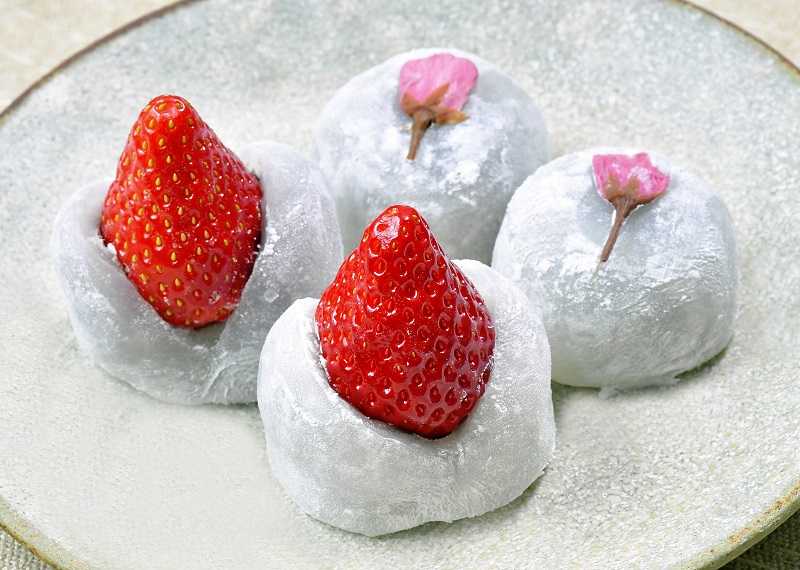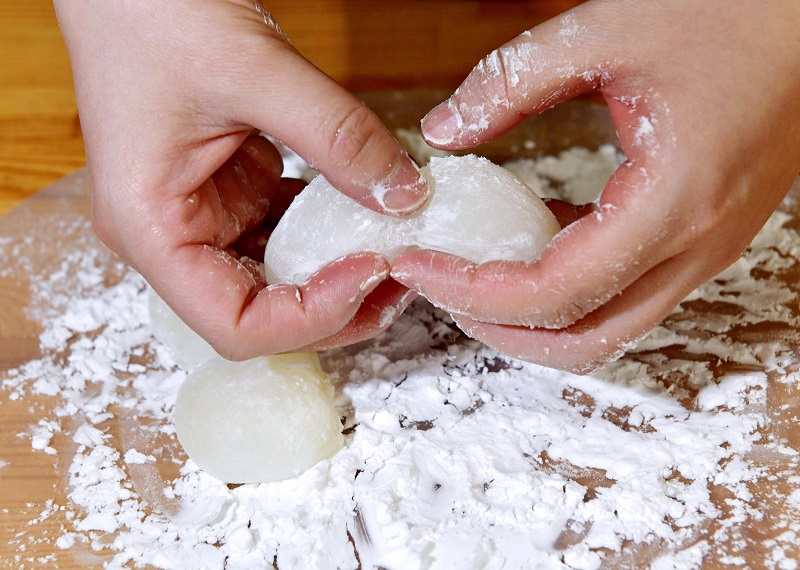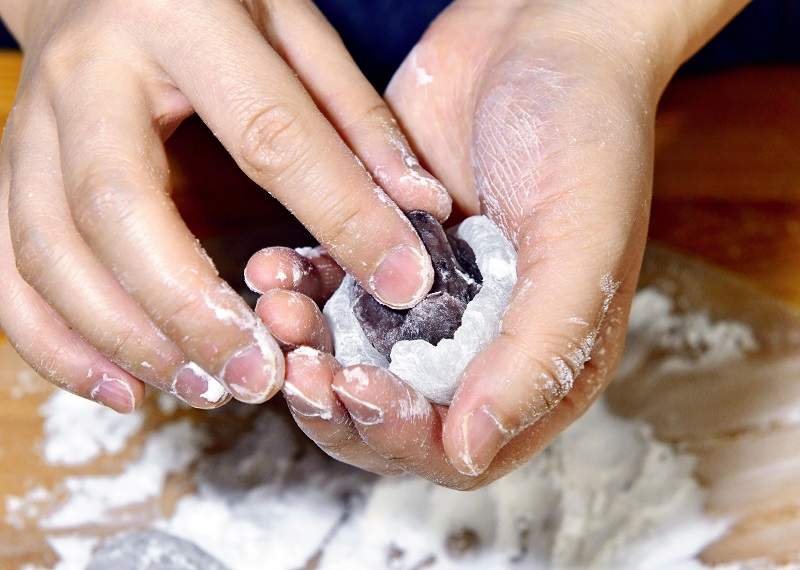
Strawberry daifuku and cherry blossom daifuku
8:00 JST, April 26, 2022
Wagashi Japanese sweets are not only a treat for the taste buds, but the eyes as well. As the confectioneries beautifully represent the changing seasons, many people assume they are difficult to make. However, some wagashi can be made very easily using just a microwave.
One such confectionery is strawberry daifuku, a seasonal treat made with fresh strawberries. Daifuku is sweet mochi stuffed with red bean paste.
“The acidity of the strawberries and the sweetness of the daifuku perfectly balance each other out,” says Keiko Omori, who runs the Japanese confectionery school Yuimiko in Tokyo. “You can make it easily with ordinary ingredients.”
As long as you remember how to make gyuhi dough, which is used to make daifuku, you can enjoy these sweets all year round. Gyuhi is a softer type of mochi made from glutinous rice flour.
Strawberry daifuku
Ingredients (Makes 4 pieces):
- 25 grams shiratama refined rice flour
- 50 ml water
- 50 grams fine, high-quality white sugar
- 80 grams tsubuan coarse red bean paste
- 4 strawberries
- Starch powder, such as potato or corn
Directions:
1. Sprinkle a generous amount of starch powder into a baking pan or onto another surface. Remove the stems from the strawberries, rinse with water and then pat them dry.
2. Roll the tsubuan red bean paste into balls weighing 20 grams. Koshian smooth red bean paste can also be used. If the paste does not hold its shape, briefly heat it in the microwave and allow it to cool to remove excess moisture.
3. To make the gyuhi mochi, put the shiratama rice flour in a heatproof bowl and mix while slowly adding water to prevent clumping, then add the sugar. Put the mixture into the microwave (600 watts) for 1½ to 2 minutes. The key is to mix it every 30 seconds or 1 minute while it is in the microwave to prevent it from heating unevenly. The mochi is done when it becomes transparent and shiny.

To prevent the shiratama rice flour from clumping, add water little by little.
4. While it is still hot, place the dough into a baking pan that is covered with starch powder and divide it into four equal portions. Make sure the dough does not stick to the surface.

Divide the mochi dough into four equal parts.
5. Form the daifuku while the mochi is still hot. Place the red bean paste onto the flattened mochi dough. Wrap the mochi around the red bean paste as you press the paste into the dough. Put the daifuku aside with the sealed side facing down. If the dough begins to harden, wrap it in plastic wrap and warm it in the microwave for 5 to 10 seconds.

Wrap the mochi around the red bean paste while pressing the paste into the dough.
>6. After the daifuku cools, sprinkle a little starch powder onto a knife and cut a slit into the daifuku about two-thirds deep, pull it apart and place a strawberry in the middle.
Freshly made daifuku are beautiful to look at and are surprisingly soft, like the cheeks of a baby. The juiciness of the strawberries and the sweetness of the daifuku are a perfect match. They also make great gifts.
When strawberry season ends, you can top off the daifuku with other fruits, such as kiwi, grapes or pineapple.
You can also add a garnish of pickled cherry blossoms, which are available this time of year, to make cherry blossom daifuku. Soak the cherry blossoms in water for about 10 to 15 minutes to remove the salt, then drain the water before placing the blossoms on top of the sweet.
“The slightly salty flavor makes it more suitable for the adult palate,” Omori said. “Enjoy the experience of making your favorite wagashi with your own hands.”
"Features" POPULAR ARTICLE
-

Sanrio to Open Museum in Yamanashi Pref. Dedicated to Founder, Exhibits Include Hello Kitty, Other Characters
-

Autumn Foliage Surrounds Visitors to Tokyo’s Showa Kinen Park
-

My Daughter No Longer Speaks to Me, But I Want to See Her and My Grandchild
-

Kumamoto: Public Bath Refurbished as Library Where You Can Chat, Take Photos
-

Frozen Vegetables: Demand Rises for Convenient, Tasty Domestic Produce
JN ACCESS RANKING
-

Tokyo Economic Security Forum to Hold Inaugural Meeting Amid Tense Global Environment
-

Keidanren Chairman Yoshinobu Tsutsui Visits Kashiwazaki-Kariwa Nuclear Power Plant; Inspects New Emergency Safety System
-

Imports of Rare Earths from China Facing Delays, May Be Caused by Deterioration of Japan-China Relations
-

University of Tokyo Professor Discusses Japanese Economic Security in Interview Ahead of Forum
-

Japan Pulls out of Vietnam Nuclear Project, Complicating Hanoi’s Power Plans


























